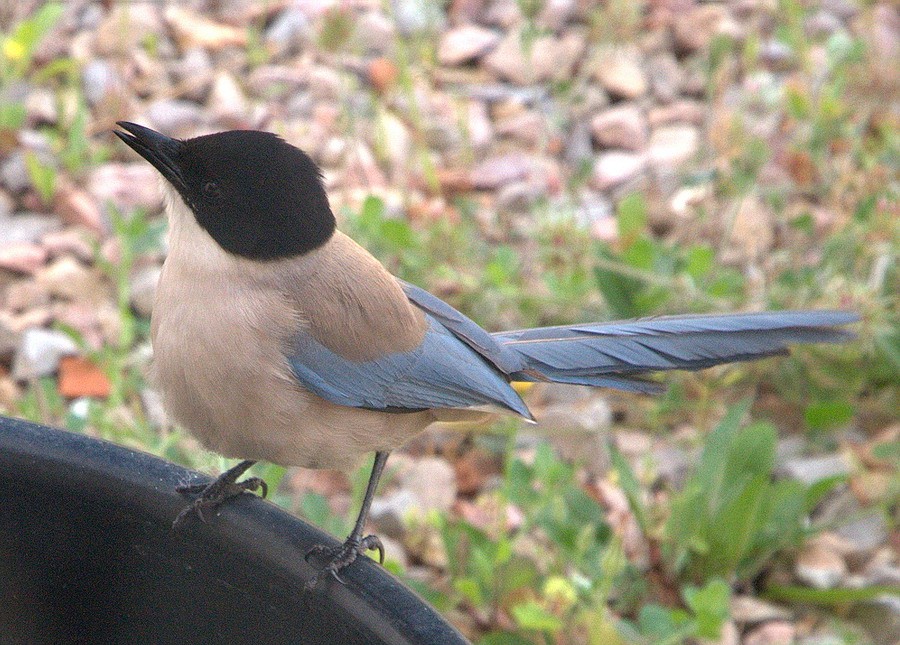Iberian Magpie
A species of Azure-winged magpies Scientific name : Cyanopica cooki Genus : Azure-winged magpies
Iberian Magpie, A species of Azure-winged magpies
Botanical name: Cyanopica cooki
Genus: Azure-winged magpies
Content
Description General Info
Description
The Iberian magpie (Cyanopica cooki) is a bird in the crow family. It is 31–35 cm long and similar in overall shape to the Eurasian magpie (Pica pica) but is more slender with proportionately smaller legs and bill. It belongs to the genus Cyanopica. Other common names include Iberian azure-winged magpie, Cook's azure-winged magpie and Spanish azure-winged magpie. It has a glossy black top to the head and a white throat. The underparts and the back are a light grey-fawn in colour with the wings and the feathers of the long (16–20 cm) tail are an azure blue. It inhabits various types of coniferous (mainly pine) and broadleaf forest, including parks and gardens in the eastern populations. 
Size
36 cm
Colors
Black
Gray
White
Blue
Nest Placement
Tree
Feeding Habits
Iberian Magpie primarily feed on acorns and pine nuts, bolstered by invertebrates, larvae, fruits, berries, and even human scraps. Their unique foraging habits reflect a diverse diet, setting them apart in their ecological niche.
Habitat
Iberian Magpie predominantly inhabits open woodlands, where it is often associated with oak species such as holm oak and cork oak, as well as areas with stone pines. These birds can also be found in agricultural landscapes like orchards and olive groves. Iberian Magpie shows a particular preference for roosting in stands of eucalyptus trees, which can sometimes be found in human-altered habitats like coastal wooden dunes, especially in areas where they can outcompete the common magpie. Generally, they occur in regions from sea level up to 700 meters in elevation.
Dite type
Omnivorous
General Info
Feeding Habits
Bird food type
Behavior
Often Iberian magpies find food as a family group or several groups making flocks of up to 70 birds. The largest groups congregate after the breeding season and throughout the winter months. Their diet consists mainly of acorns (oak seeds) and pine nuts, extensively supplemented by invertebrates and their larvae, soft fruits and berries, and also human-provided scraps in parks and towns. This species usually nests in loose, open colonies with a single nest in each tree. There are usually 6–8 eggs that are incubated for 15 days. 
Distribution Area
The Iberian magpie occurs in southwestern and central parts of the Iberian Peninsula, in Spain and Portugal. However, it can sometimes be spotted also in south-western France, and recently its presence has been reported even in northern Italy. This taxon is usually treated as conspecific with azure-winged magpie C. cyana, but this population is 5400 miles (9,000 km) away from those in eastern Asia. Recent genetic analysis has shown that the Iberian magpie and the azure-winged magpie are distinct at species level. 
Species Status
Not globally threatened.
Scientific Classification
Phylum
Chordates Class
Birds Order
Perching birds Family
Crows and jays Genus
Azure-winged magpies Species
Iberian Magpie 